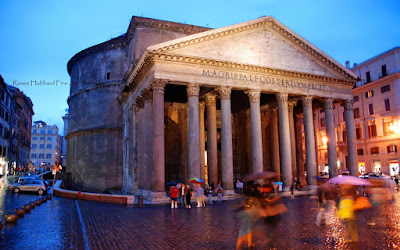 I grew up in South Africa during the reign of apartheid, and though I left the country long before Nelson Mandela was released from his 27 year political imprisonment in isolation and hard labour, I knew even then that South Africa had two precious commodities - gold and Nelson Mandela. In 1990 on the day he was finally released, I watched excitedly with the world as he emerged from that prison and walked his first steps into freedom. I could not believe that his dignity, his principles, his belief, his spirit and his humanity was still intact and that he could be so forgiving of his captors. When asked what he missed most while in prison, he replied that it was hearing the sounds of laughing children.
I grew up in South Africa during the reign of apartheid, and though I left the country long before Nelson Mandela was released from his 27 year political imprisonment in isolation and hard labour, I knew even then that South Africa had two precious commodities - gold and Nelson Mandela. In 1990 on the day he was finally released, I watched excitedly with the world as he emerged from that prison and walked his first steps into freedom. I could not believe that his dignity, his principles, his belief, his spirit and his humanity was still intact and that he could be so forgiving of his captors. When asked what he missed most while in prison, he replied that it was hearing the sounds of laughing children.When I look out over the magnificent Pacific ocean, so close to my home, and lift my camera to try to capture something of it's awe-inspiring beauty, or peer into the secret world of flowers with my macro lens, I often think of Nelson Mandela and how deprived he must have felt to have spent so much of his life imprisoned within the four walls of that tiny concrete cell. Freedom for him came at an astronomical price.
In his autobiography, 'Long Walk to Freedom', Mandela declared, "I was not born with a hunger to be free. I was born free. Free in every way that I could know. Free to run in the fields near my mother's hut, free to swim in the clear stream that ran through my village, free to roast mealies under the stars ... It was only when I learnt that my boyhood freedom was an illusion ... that I began to hunger for it."
I still have a portrait of the great man in my office. It reminds me that changing the world can start with a single person and it inspires me to try. If you need some inspiration in your life, go and see the film 'Invictus' or borrow a copy of 'Long Walk to Freedom'. It will inspire you to greater things!





























 I have an interesting art request. A Psychologist is revamping her practice and has ordered five very large framed fine art prints in very odd sizes to fit the walls in the room and tone in with her new black and white marble floors. She roamed my gallery and has chosen some of my favourite images from Venice and Rome, taken on my travels through Europe with a small, lightweight Nikon camera. Enlarging these particular images to the odd sizes required has been quite challenging, however with the help of my very knowledgeable Printer/Framer, Mark de Calmer, we have produced a very exciting result.
I have an interesting art request. A Psychologist is revamping her practice and has ordered five very large framed fine art prints in very odd sizes to fit the walls in the room and tone in with her new black and white marble floors. She roamed my gallery and has chosen some of my favourite images from Venice and Rome, taken on my travels through Europe with a small, lightweight Nikon camera. Enlarging these particular images to the odd sizes required has been quite challenging, however with the help of my very knowledgeable Printer/Framer, Mark de Calmer, we have produced a very exciting result.
